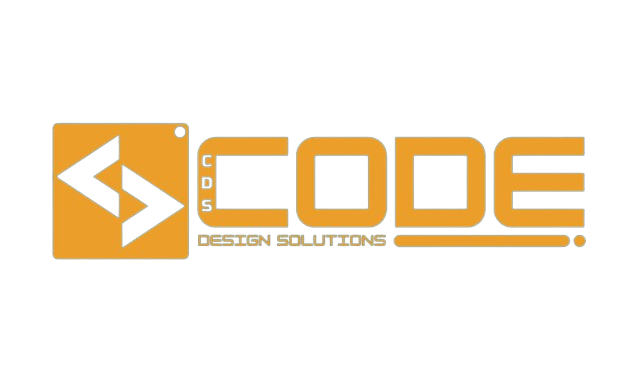In today’s digital age, a website serves as the digital storefront for businesses and individuals alike. Creative web design goes beyond just aesthetics; it encapsulates the fusion of functionality, usability, and visual appeal to create a memorable online experience. Whether you’re revamping an existing website or starting from scratch, embracing creativity in web design can set your project apart from the crowd.
Importance of Creative Web Design
Enhancing User Experience
User experience (UX) plays a pivotal role in determining the success of a website. Creative web design focuses on crafting seamless navigation, intuitive layouts, and engaging interactions that keep visitors hooked. By prioritizing user experience, you can reduce bounce rates, increase engagement, and foster a positive perception of your brand.
Reflecting Brand Identity
Your website serves as a digital representation of your brand identity. Creative web design allows you to convey your brand’s personality, values, and unique selling propositions through visual elements, color schemes, and messaging. Consistency in branding across all digital touchpoints helps establish brand recognition and fosters trust among your audience.
Key Elements of Creative Web Design
Visual Aesthetics
Visitors form their first impression of a website within seconds of landing on it. Creative web design leverages visually striking graphics, captivating imagery, and harmonious color palettes to create an immersive experience. Striking a balance between aesthetics and functionality ensures that your website not only looks appealing but also serves its purpose effectively.
Navigation and Usability
Intuitive navigation is essential for guiding users through your website seamlessly. Creative web design incorporates user-friendly navigation menus, clear call-to-action buttons, and logical page hierarchies to enhance usability. By prioritizing ease of navigation, you can prevent frustration and encourage exploration, ultimately leading to higher conversion rates.
Responsiveness
With the proliferation of mobile devices, responsive web design is no longer optional—it’s imperative. Creative web design ensures that your website adapts seamlessly to various screen sizes and devices, providing a consistent user experience across desktops, smartphones, and tablets. A mobile-friendly website not only improves user satisfaction but also boosts your search engine rankings, thanks to Google’s mobile-first indexing.
Inspiring Examples of Creative Web Design
Case Study 1: [Example Website Name]
[Describe the first case study, highlighting its innovative design elements, unique features, and impact on user experience.]
Case Study 2: [Example Website Name]
[Discuss the second case study, focusing on its creative approach to storytelling, interactive elements, and visual appeal.]
Case Study 3: [Example Website Name]
[Explore the third case study, showcasing its use of animation, micro-interactions, and user-centered design principles.]
Ideas and Tips for Creative Web Design
Utilizing White Space
White space, or negative space, plays a crucial role in directing attention and creating visual hierarchy. Creative web design utilizes ample white space to declutter layouts, emphasize key elements, and improve readability. Embracing white space allows your content to breathe and makes your website feel more polished and sophisticated.
Incorporating Interactive Elements
Interactive elements such as animations, parallax scrolling, and hover effects can elevate the user experience and foster engagement. Creative web design integrates interactive features strategically, adding depth and interactivity to static web pages. From subtle animations to immersive multimedia experiences, interactive elements leave a lasting impression on visitors and encourage them to explore further.
Experimenting with Typography
Typography plays a pivotal role in shaping the visual identity of a website. Creative web design embraces typography as a design element, experimenting with fonts, sizes, and styles to convey mood, personality, and hierarchy. Whether it’s bold headlines, elegant serif fonts, or playful handwritten scripts, choosing the right typography can enhance the overall aesthetic appeal of your website and reinforce your brand’s message.
Tools and Resources for Creative Web Design
Design Software
- Adobe Photoshop: Industry-standard software for graphic design and photo editing.
- Sketch: Vector-based design tool for creating user interfaces and interactive prototypes.
- Figma: Collaborative interface design tool with real-time collaboration features.
Stock Image Libraries
- Unsplash: A curated collection of high-quality, royalty-free images for use in web design projects.
- Shutterstock: Extensive library of stock photos, illustrations, and vectors for creative professionals.
- Pexels: Free stock photo and video library with a diverse range of high-resolution assets.
Online Inspiration Platforms
- Behance: Showcase platform for creative professionals to share and discover design projects.
- Dribbble: Community of designers showcasing their work, including web design, UI/UX, and illustration.
- Awwwards: Recognizes the talent and effort of the best web designers, developers, and agencies worldwide.
Challenges and Solutions in Creative Web Design
Balancing Creativity with Functionality
While creativity is essential in web design, it must be balanced with functionality and usability. Creative elements should enhance, not detract from, the user experience. Conducting usability testing, gathering feedback from stakeholders, and prioritizing user needs can help strike the right balance between creativity and practicality.
Addressing Cross-Browser Compatibility
Ensuring that your website renders consistently across different web browsers and devices can be challenging. Creative web design involves thorough testing and optimization to address compatibility issues and ensure a seamless experience for all users. Leveraging modern web standards, utilizing responsive design techniques, and staying updated on browser compatibility best practices can help mitigate compatibility issues.
Conclusion
Creative web design is a powerful tool for captivating audiences, reflecting brand identity, and driving engagement. By incorporating visual aesthetics, intuitive navigation, and responsive design principles, you can create memorable online experiences that leave a lasting impression. Whether you’re a seasoned designer or embarking on your first web design project, embracing creativity can elevate your website to new heights of success.

